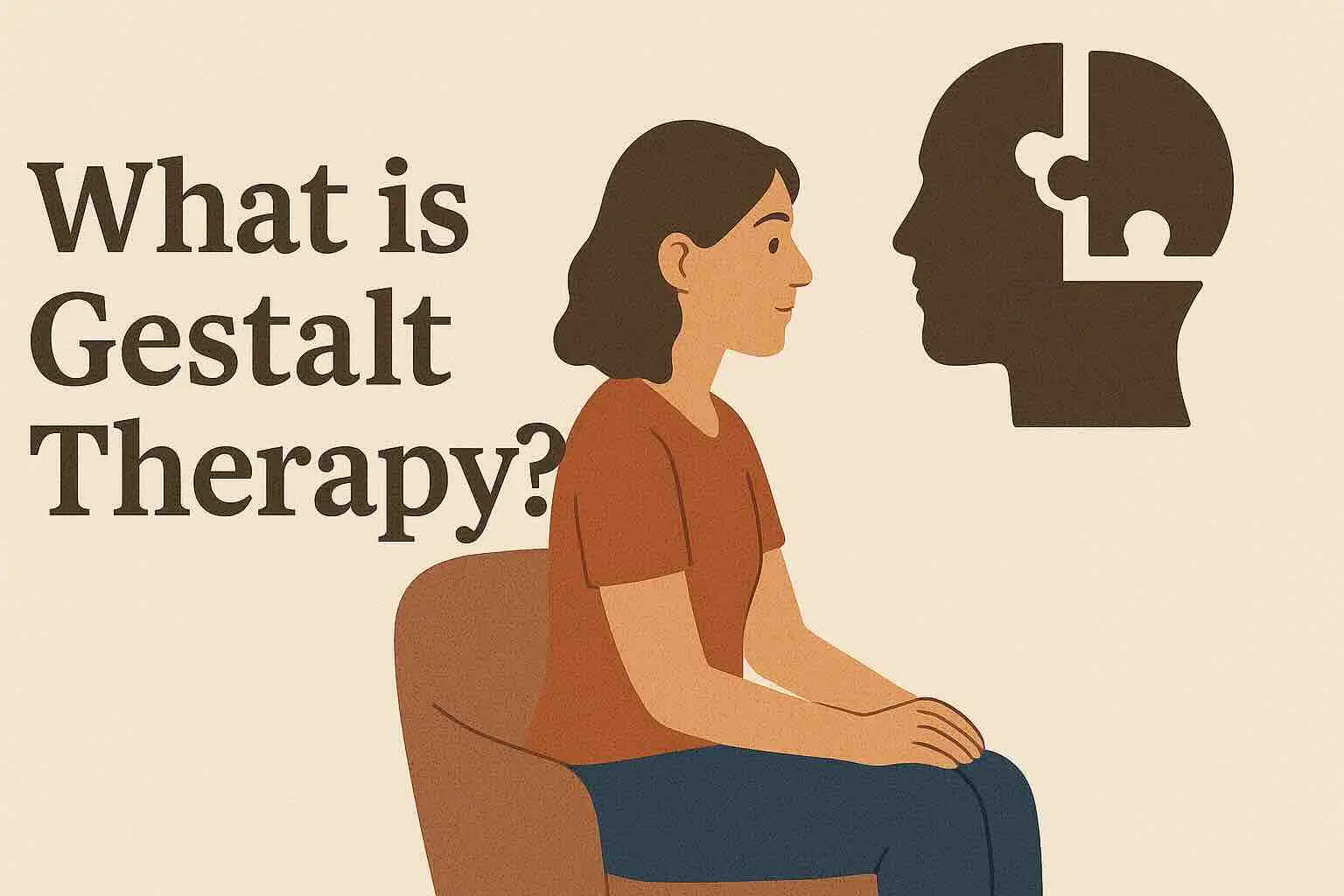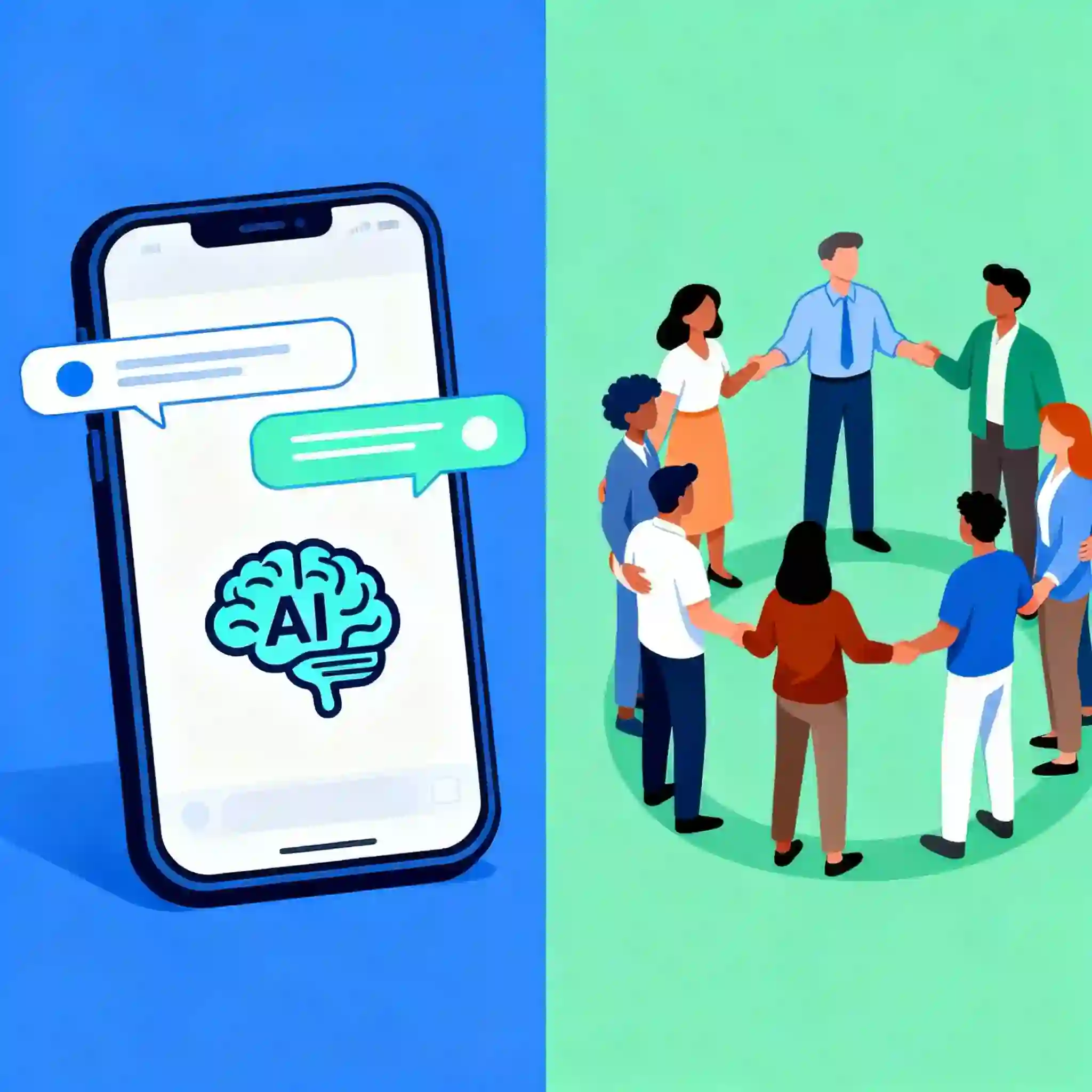TL;DR
Gestalt Therapy is a humanistic, experiential approach that emphasizes present-moment awareness, holistic integration, and contact boundary management to foster self-discovery and growth. Core techniques include the Empty Chair, the “Here-and-Now” dialogue, focusing, and body awareness. Research shows moderate effectiveness (d ≈ 0.60) for anxiety, depression, and self-esteem issues. Noah AI supports Gestalt practices via chat and call by guiding awareness exercises, role-play dialogues, and reflective prompts.
Gestalt Therapy, developed by Fritz Perls in the 1940s and ’50s, invites individuals to cultivate full presence and authentic dialogue with themselves and others. Unlike therapies that dissect past events, Gestalt focuses on what’s happening now—thoughts, emotions, sensations, and interactions—helping clients integrate disowned parts of self and complete unfinished “gestalts.”
Core Principles of Gestalt Therapy
- Here-and-Now Awareness: Emphasis on present experience rather than historical analysis.
- Wholeness and Holism: Viewing mind, body, and environment as an interconnected whole.
- Contact Boundary Awareness: Understanding how individuals make (and lose) contact with the world—through introjection, projection, retroflection, deflection, confluence.
- Self-Responsibility: Encouraging ownership of choices, feelings, and actions.
- Creative Adjustment: Flexibly adapting contact styles to meet current needs.
- Field Theory: Recognizing individuals exist within a constantly changing life field or context.
Key Gestalt Techniques
Empty Chair Dialogue
- Role-Play Conversations: Clients address an imagined person or part of self in an empty chair, then switch chairs to experience both perspectives.
- Integration: Facilitates resolution of internal conflicts and unexpressed emotions.
Here-and-Now Dialogue
- Present-Focused Questions: Therapist prompts clients to describe immediate thoughts, feelings, and bodily sensations ("What are you experiencing right now?").
- Authentic Expression: Encourages unfiltered, spontaneous responses.
Focusing and Body Awareness
- Sensing Into the Body: Clients learn to attend to physical sensations as entry points to emotions and unmet needs.
- Focusing Technique: Therapist guides clients to notice and describe bodily “felt senses,” clarifying underlying emotional content.
Experiments
- Spontaneous Exercises: Therapist designs in-session experiments (e.g., exaggerated gestures, vocal expression) to heighten awareness of patterns.
- Creative Expression: Clients try new behaviors in the safety of therapy to discover alternative ways of being.
How Gestalt Therapy Works
- Establishing Contact: Therapist-client relationship modeled on genuine, present interaction.
- Heightening Awareness: Early sessions focus on noticing patterns of avoidance, emotional suppression, and contact disruptions.
- Experiential Work: Techniques like the Empty Chair and experiments bring unconscious dynamics into conscious awareness.
- Integration: Clients practice new, authentic ways of responding both in session and in daily life.
- Completion: Gestalts (unfinished experiences) are brought to closure through expression, understanding, and new choices.
Evidence of Effectiveness
- Meta-Analytic Findings: Gestalt Therapy demonstrates moderate effect sizes (d ≈ 0.55–0.65) comparable to other humanistic modalities for anxiety, depression, and self-esteem.
- Symptom Reduction: Studies report significant decreases in depressive and anxiety symptoms over 8–12 weeks of weekly sessions.
- Holistic Outcomes: Clients show improved self-awareness, body image, and interpersonal functioning.
Who Benefits Most
- Anxiety and Depression: Particularly when symptoms involve avoidance and emotional suppression.
- Relationship Issues: Couples and individuals seeking authentic communication and boundary clarity.
- Trauma Survivors: Using present-moment grounding to process traumatic memories somatically.
- Creative Blocks: Artists and professionals gaining access to suppressed creativity.
- Personal Growth Seekers: Individuals desiring deeper self-understanding and authenticity.
Noah AI’s Support for Gestalt Practice
While Gestalt Therapy traditionally relies on in-person experiential work, Noah AI’s chat and call sessions adapt core techniques for virtual delivery:
- Guided Awareness Prompts: AI-led exercises directing attention to current thoughts, emotions, and bodily sensations.
- Empty Chair via Chat/Dialog: Structured script guiding clients through dual-perspective dialogues in text or voice.
- Focusing Exercises: Step-by-step instructions for noticing and describing felt senses in body awareness practice.
- Experiment Suggestions: Tailored mini-experiments clients can try between sessions (e.g., exaggerated gesture at home) and report back.
- Reflective Summaries: AI mirrors client insights, reinforcing integration and self-responsibility.
Frequently Asked Questions
Can Gestalt Therapy be done virtually?
Yes. Core experiential and awareness practices translate to guided chat and call formats, supported by Noah AI’s stepwise prompts and reflective feedback.
How long does Gestalt Therapy take to show change?
Clients often experience increased awareness and relief within 4–6 sessions; deeper integration typically emerges over 10–20 sessions.
What if I’m uncomfortable with role-play?
Noah AI adapts techniques to your comfort level, offering alternate exercises (e.g., journaling dialogues) to achieve similar awareness.
Is Gestalt Therapy only for individuals?
No. Gestalt is effective for couples, groups, and families—facilitating authentic contact and integration across relational contexts.
Conclusion
Gestalt Therapy invites a radical return to present-moment living, helping individuals reclaim authenticity and wholeness through experiential awareness. With evidence supporting its moderate effectiveness for mood and anxiety disorders, Gestalt remains a powerful humanistic approach.
Noah AI’s AI-guided chat and call sessions extend Gestalt techniques into everyday life—providing continuous access to awareness exercises, experiment designs, and reflective integration that foster ongoing personal growth and authentic connection.
Ready to embrace full presence? Discover how Noah AI’s Gestalt-inspired exercises can guide your journey toward holistic awareness, genuine contact, and emotional integration—because healing begins in the here and now.
Download the Noah AI app for iPhone and Android today.
References
- “A Meta-Analysis of Gestalt Therapy Outcomes” – Clinical Psychology Review
https://doi.org/10.1016/j.cpr.2020.101801 - “Empty Chair Technique in Gestalt Therapy” – Gestalt Therapy Institute
https://gestalttherapy.org/empty-chair-technique/ - “The Focusing Technique: A Guide to Body Awareness” – The Focusing Institute
https://focusing.org/basic/focusing-guide - “Experiential Exercises in Gestalt Therapy: A Review” – Frontiers in Psychology
https://www.frontiersin.org/articles/10.3389/fpsyg.2023.01234/full







